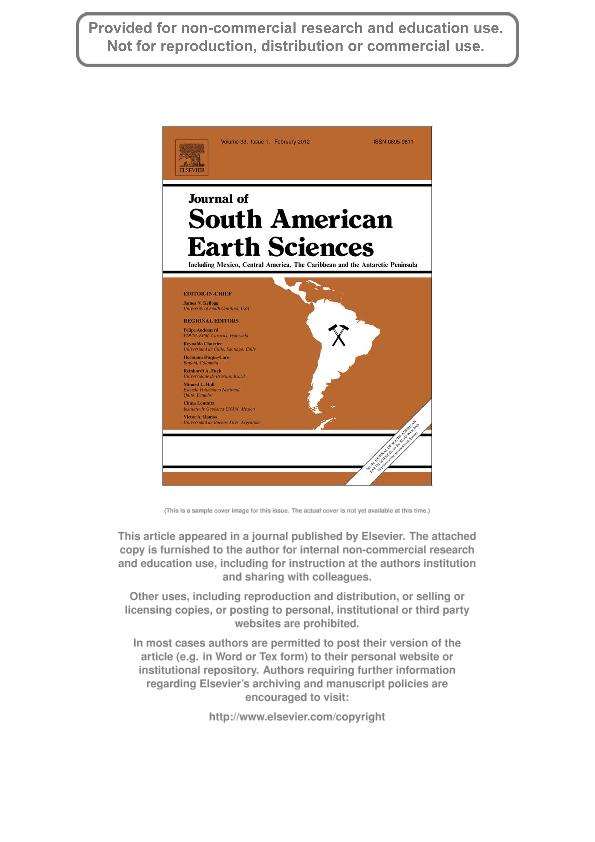Artículo
Late Pleistocene and Holocene environmental and climatic conditions in the eastern Andean piedmont of Mendoza (33°-34°S, Argentina)
Fecha de publicación:
08/2012
Editorial:
Pergamon-Elsevier Science Ltd
Revista:
Journal of South American Earth Sciences
ISSN:
0895-9811
Idioma:
Inglés
Tipo de recurso:
Artículo publicado
Clasificación temática:
Resumen
The main goal of this paper is to analyze the late Quaternary alluvial record of the Andean piedmont between 33° and 34°S (Mendoza, Argentina) reconstructing the prevailing paleoenvironmental conditions and discussing their regional significance. The analysis was carried out along the outcrops of Arroyo La Estacada and its tributary Arroyo Anchayuyo, complementary sections were described at Arroyo Grande and Arroyo Yaucha. The sedimentological, stratigraphical and geochronological (radiocarbon and OSL dating) results as well as the paleoenvironmental interpretation are presented and discussed on the basis of the geomorphological units identified at the piedmont fluvial systems. Late Quaternary deposits of Arroyo La Estacada compose three main geomorphological units consisting of an extensive aggradational plain, a fill terrace and the present floodplain -which is not analyzed in this contribution- At the aggradational plain a distal alluvial fan lithofacial association was determined, mainly related to overbank sheet fluid overflows and probably temporary inactive channels of sandy-like braided streams between ∼50 ka BP and the early Holocene. The mid-late Holocene fining upward alluvial sequence of the fill terrace corresponds to a sinuous fluvial system lithofacial association. The mid-to late Holocene alluvial sequence exposed at Arroyo Grande banks shows a fining upward sequence probably related to a sinuous fluvial system lithofacial association. Finally, in the Arroyo Yaucha the upper and lower terraces analyzed in this study record a Late Glacial and Holocene fining upward alluvial sequence of a sinuous fluvial system lithofacial association. The late Pleistocene - early Holocene dynamic of the Andean piedmont documents an interval of alluvial aggradation characterized by the occurrence of sandy systems similar to braided rivers in the distal fan environments. The mid-late Holocene is marked by aggradation in sinuous fluvial systems and by two major episodes of degradation registered across the fluvial systems of the study area. This paleoenvironmental reconstruction allowed us to propose an evolutionary scheme and chronology of the major fluvial landscape landforms contributing to the general understanding of the sedimentological and geomorphological dynamic during the late Quaternary.
Archivos asociados
Licencia
Identificadores
Colecciones
Articulos(INCITAP)
Articulos de INST.D/CS D/L/TIERRA Y AMBIENTALES D/L/PAMPA
Articulos de INST.D/CS D/L/TIERRA Y AMBIENTALES D/L/PAMPA
Citación
Mehl, Adriana Ester; Zárate, Marcelo Arístides; Late Pleistocene and Holocene environmental and climatic conditions in the eastern Andean piedmont of Mendoza (33°-34°S, Argentina); Pergamon-Elsevier Science Ltd; Journal of South American Earth Sciences; 37; 8-2012; 41-59
Compartir
Altmétricas




